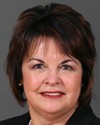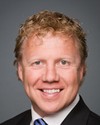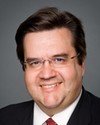Perhaps you could give that to the clerk and it could be dispersed to the committee.
If I have any more time--
Evidence of meeting #48 for Natural Resources in the 40th Parliament, 3rd session. (The original version is on Parliament’s site, as are the minutes.) The winning word was waste.
A recording is available from Parliament.
Conservative

Patricia Davidson Conservative Sarnia—Lambton, ON
Perhaps you could give that to the clerk and it could be dispersed to the committee.
If I have any more time--
Conservative

The Chair Conservative Leon Benoit
You do not, Ms. Davidson, but thank you for your questions.
We go now to Madame Brunelle, for up to four minutes.
Go ahead, please.
Bloc

Paule Brunelle Bloc Trois-Rivières, QC
I will be sharing my time with Mr. Pomerleau.
Mr. Binder, I would like to pick up on a point you made. You clearly stated that if this shipment of nuclear waste goes well, further shipments may follow. As I see it, you are admitting that there would be a precedent. This worries me.
I would like to reference a separate multi-year initiative by the Nuclear Waste Management Organization to identify a Canadian waste burial site. Apparently, the Canadian Shield would be the best place. I am sure you can see my concern. Would any waste disposal site in eastern Canada mean that the Saint Lawrence would become the main route for the transportation of nuclear waste? You have indicated that if this project goes well, it will lead to many more waste shipments.
President and Chief Executive Officer, Canadian Nuclear Safety Commission
No, we are talking about a different type of waste. I would ask Mr. Jammal to provide more detail on this.
Executive Vice-President and Chief Regulatory Operations Officer, Canadian Nuclear Safety Commission
The Chair put it very well. The current situation is that there are no pre-approved packages to house these materials. It is quite routine for all reactor spent fuel to be shipped in a safe manner. Once the fuel has been spent, tests and checks are required to ascertain whether changes have to be made. This type of material is currently transported by... Is some of it being shipped through the Saint Lawrence? Potentially, it is. However, the shipment process is on going. The Commission intends to hold public hearings, conduct an environmental assessment and make a decision. Waste needs to be centralized. Every country is facing the same situation. They either have to designate a site or store the waste.
Bloc

Roger Pomerleau Bloc Drummond, QC
Thank you, Mr. Chairman.
Thank you very much for being here today. I, like many of my colleagues, attended your presentation on the technical aspects of the overall project. Thank you. It was very interesting and highly informative.
I am sure you are aware that when it comes to the law, there are two crucial tests. My example is the law but the concept applies just as well to science. There must be legitimacy and an appearance of legitimacy. I take no issue with the legitimacy of the science-based process you have developed nor with the explanations you have provided. However, Quebeckers clearly do not perceive the science of the current project we are discussing as legitimate. The science does not appear to stand the test for all sorts of reasons. There are thousands of people who are frightened and seriously worried about this project. We are told that studies have been conducted and that the entire process is based on scientific fact. However, I would just like to point out that there are hundreds of example of problems arising from products deemed safe by scientists. Thalydomide was given the green light by scientists as was asbestos and UFFI. People do not see scientist approval as an absolute guarantee.
Although it is not part of your mandate, how do you think you can rally people to the project in its current state?
President and Chief Executive Officer, Canadian Nuclear Safety Commission
The people against this project are the same ones who are against uranium and Gentilly-2. They have always opposed the nuclear industry. Safety has nothing to do with it. It is really an issue of opposition to the nuclear industry. It is a genuine challenge.
Bloc

Roger Pomerleau Bloc Drummond, QC
I see. Nevertheless, as you yourself have said, the fact remains...
Bloc

Roger Pomerleau Bloc Drummond, QC
... that you are totally open to other transportation methods. To what extent do you think transportation needs will increase as Ontario’s nuclear plants are decommissioned?
President and Chief Executive Officer, Canadian Nuclear Safety Commission
I do not know. I think your question would be better directed to Bruce Power.
Conservative

The Chair Conservative Leon Benoit
Thank you, Mr. Pomerleau.
Finally, we go to Mr. Dykstra for up to four minutes. Go ahead, please.
Conservative

Rick Dykstra Conservative St. Catharines, ON
Through you, Chair, one of the issues that I found striking after reading the report was that there was this discussion around what was actually going to be on the ship itself and that it would be loaded to capacity. Could you in fact clarify as to how the determination was made? And basically, what is going to be the capacity with respect to the ships themselves in terms of what they are shipping?
Executive Vice-President and Chief Regulatory Operations Officer, Canadian Nuclear Safety Commission
Thank you.
The ship itself, as I previously mentioned, is an irradiated nuclear fuel qualified ship that will only, and only, be carrying those steam generators, and as a matter of fact, there are only 16 of them. The volume that's being transported represents 25% of the ship's capacity. As part of our staff evaluation for the recommendations to the commission, we took into consideration not just the volume of the cargo itself, but we also took the weight capacity of the ship. We measured. We spoke with the St. Lawrence Seaway Authority on the weight of the ship itself, and it's fully safe with respect even to the lowest or shallowest end as it passes through the locks.
Conservative

Rick Dykstra Conservative St. Catharines, ON
It was referenced earlier about the comparison, and it's right in the report itself, actually, in paragraph 48, the comparison between medical isotopes and the generators themselves. I'd like to give you a moment further to comment on that, Mr. Binder, because I believe it's critical to giving people an understanding of what we're talking about in terms of safety and in terms of what the content actually is. I note specifically that while Mr. Cullen was speaking about what was inside the generators, actually the comment is, that “the exterior surface of the...generators has a lower...dose than a package of medical isotopes”.
President and Chief Executive Officer, Canadian Nuclear Safety Commission
Before I pass it on to Mr. Jammal, there are two quantities, if you like. That's why I think people are misunderstanding the comparison. There is the weight and there's the activity. The weight of the total radioactivity material inside a steam generator is about four grams, and it's diffused right through the whole piping. The activity in there is a different kind of thing, and when you use a Geiger counter outside the shell you measure it at one metre, because it's the standard of measurement of safety. So at one metre away from the steam generator, it's less than one metre away from a radioisotope box that does medical isotopes. Basically, that's really the comparison we're trying to make here. In terms of safety--and that's our number one concern--this is safer than some of those boxes that have been shipped all around.
Conservative

Rick Dykstra Conservative St. Catharines, ON
Has anyone in the country ever written, called, or submitted to you a concern involving the safety around isotopes?
President and Chief Executive Officer, Canadian Nuclear Safety Commission
No one has, to my knowledge.
Conservative

The Chair Conservative Leon Benoit
Thank you, Mr. Dykstra.
Thank you very much, ladies and gentlemen, for coming today and giving us some very helpful information. It's very much appreciated.
I will suspend while we....
A point of order, Mr. Coderre.
Liberal

Denis Coderre Liberal Bourassa, QC
I would also like to thank the Commission. However, we will be hearing more witnesses. They will require clarification. Consequently, I would like the Commission to be brought back.
Conservative

The Chair Conservative Leon Benoit
That's not a point of order. We can discuss that during future committee business at some point.
I will suspend the meeting and come back with our second panel in a couple of minutes.
Conservative

The Chair Conservative Leon Benoit
We resume the meeting with our second panel. From Bruce Power we have four panellists, starting with Duncan Hawthorne, president and chief executive officer. We have Norm Sawyer, chief nuclear officer, Bruce A. We have Frank Saunders, vice-president, nuclear oversight and regulatory affairs; and Patrick Lamarre, president, SNC-Lavalin Nuclear Inc.
Welcome very much, gentlemen.
I understand, Mr. Hawthorne, you will make the presentation.
Go ahead with the presentation, please.
Duncan Hawthorne President and Chief Executive Officer, Bruce Power
Thank you.
Good afternoon, everyone, and thank you for the invitation.
I'll start by apologizing to the translator, because my accent normally causes a bit of interest, but I'll try my best.